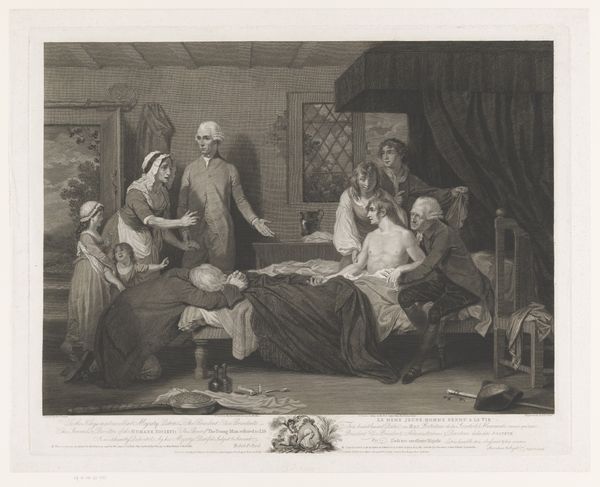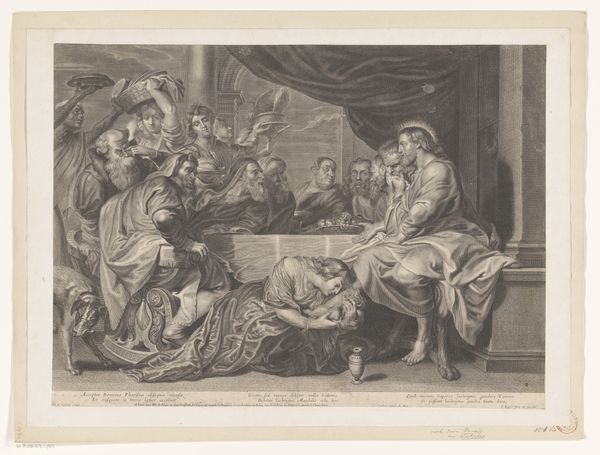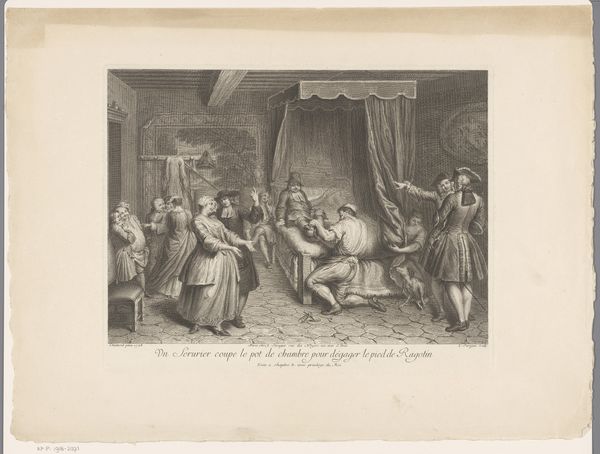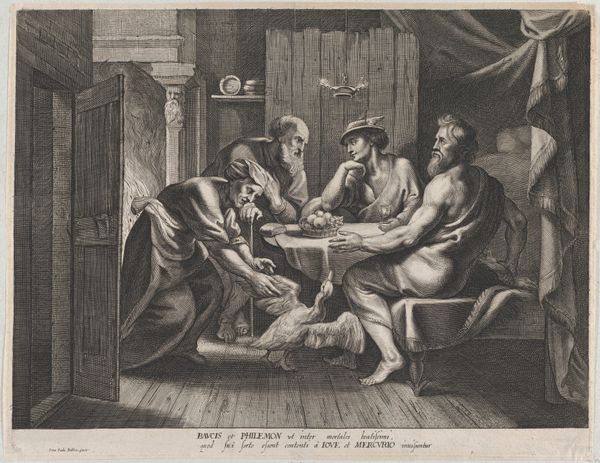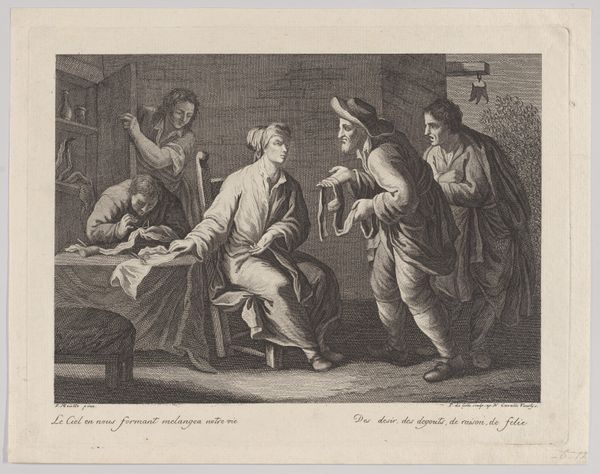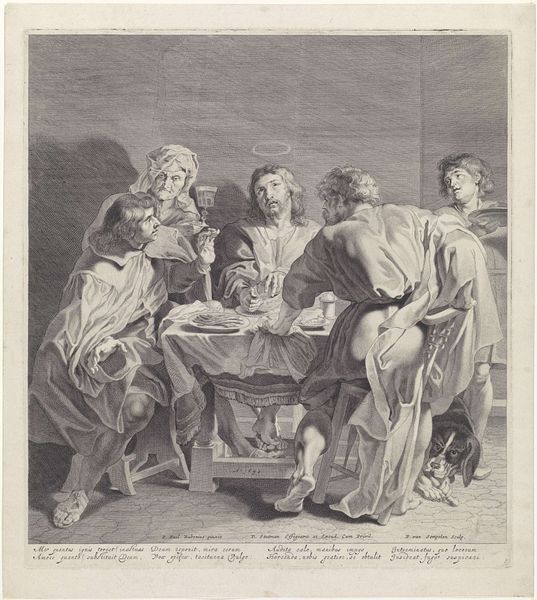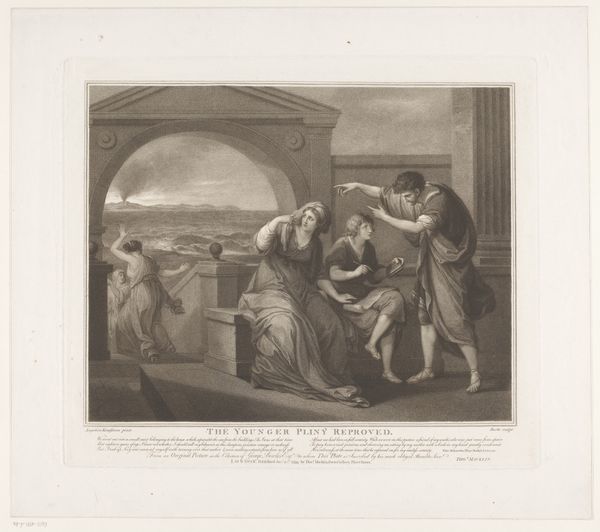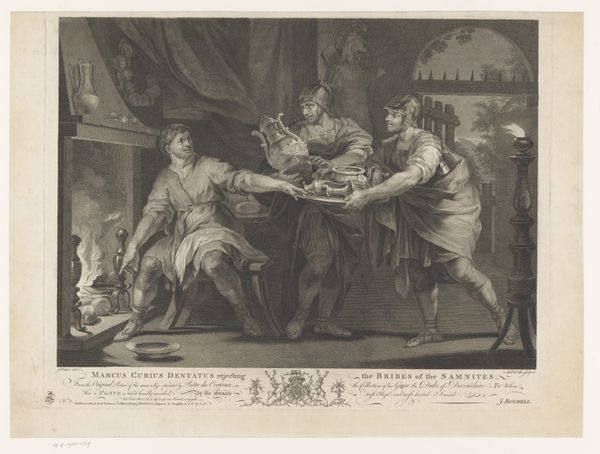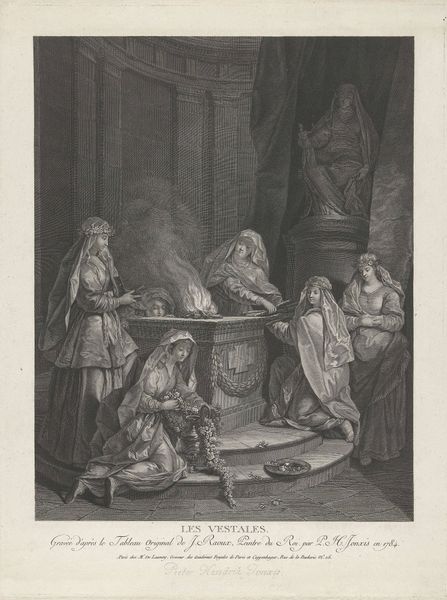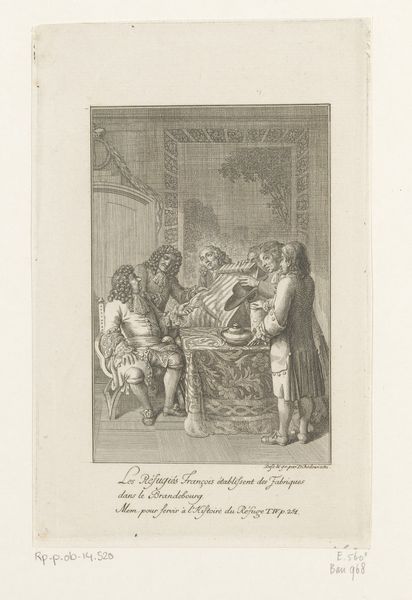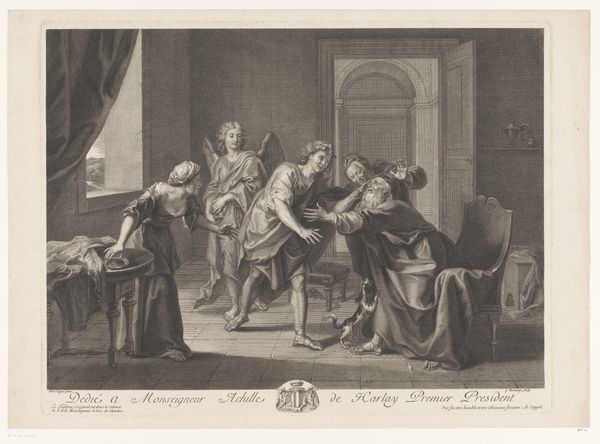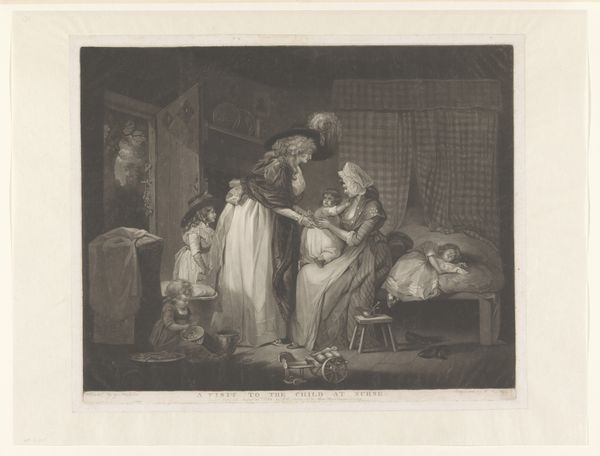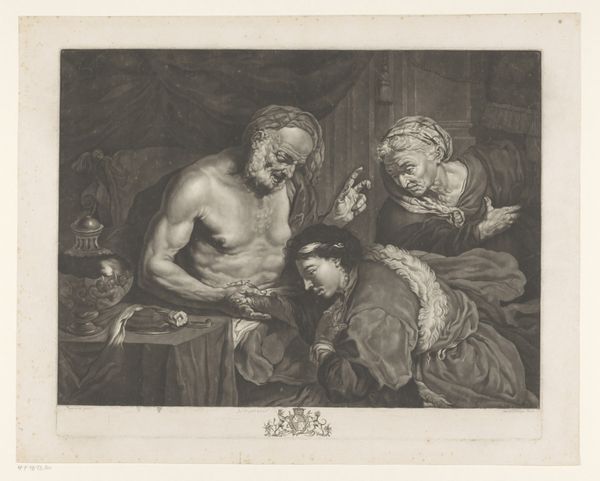
print, etching, engraving
#
portrait
#
print photography
#
neoclacissism
# print
#
etching
#
classical-realism
#
figuration
#
line
#
history-painting
#
engraving
Dimensions: height 629 mm, width 760 mm
Copyright: Rijks Museum: Open Domain
Editor: This engraving, "Jupiter en Mercurius bij Philemon en Baucis," dates to sometime between 1776 and 1830. The artist is Franz Wrenk. What immediately strikes me is how domestic it feels for a mythological scene. What do you see when you look at it? Curator: I see a fascinating snapshot of 18th-century social values expressed through material representation. Notice how Wrenk, through the reproductive process of etching, makes classical idealism accessible. Consider the labor involved in the engraving— the artisan translating a painting, mediating access. How does this process democratize the divine narrative? Editor: So, the *process* of making the print is as important as the image itself? Curator: Precisely! This work isn't just about gods visiting mortals. It's about the means by which that story is circulated and consumed. The deliberate lines of the etching mimic the clean aesthetic ideals of Neoclassicism, yet it's a printed object, a commodity produced through skilled labor. Are we really looking at ‘high art,’ or is the magic here in its wider dissemination, reaching viewers who wouldn't have access to original paintings? Think about the goose. Editor: Yes, the goose! Baucis and Philemon are trying to kill it to feed their guests, Jupiter and Mercury in disguise! Curator: Exactly! The artist, the engraver, the consumer, and even the goose participate in an economic exchange, shifting our focus from the subject towards the broader dynamics of artistic production and social value. Consider how it challenges the boundary of high art by inviting mass participation in interpreting narratives like that of Philemon and Baucis through commercial artistic production, and by prioritizing the accessibility and distribution of ideas over the preciousness and ownership associated with the original art. Editor: It's amazing to think about how a single print can reveal so much about the art world and society at the time! I never thought about prints in this way before. Curator: Seeing art through the lens of its production transforms our understanding entirely.
Comments
No comments
Be the first to comment and join the conversation on the ultimate creative platform.
